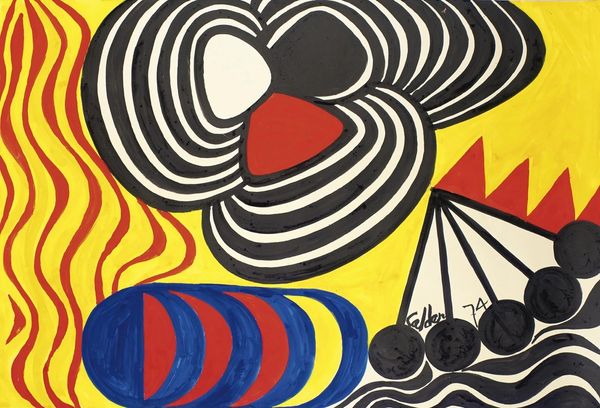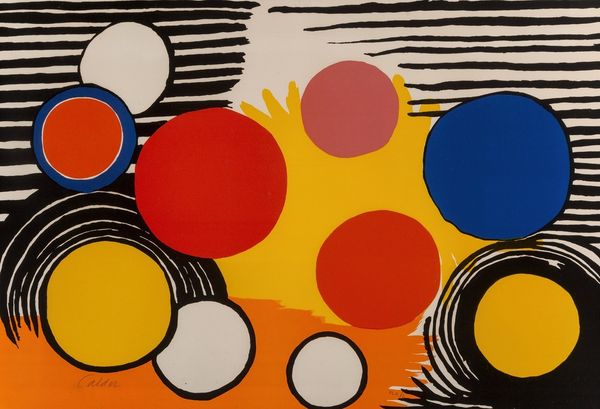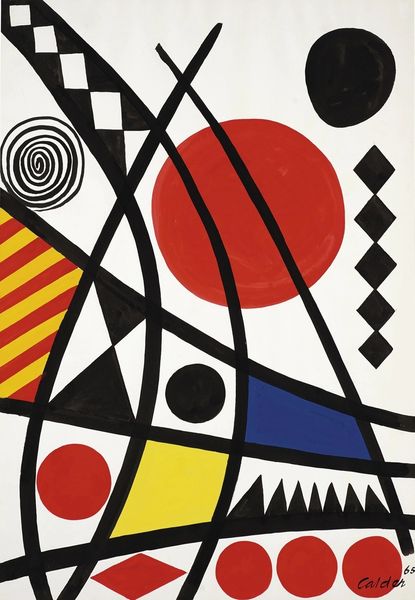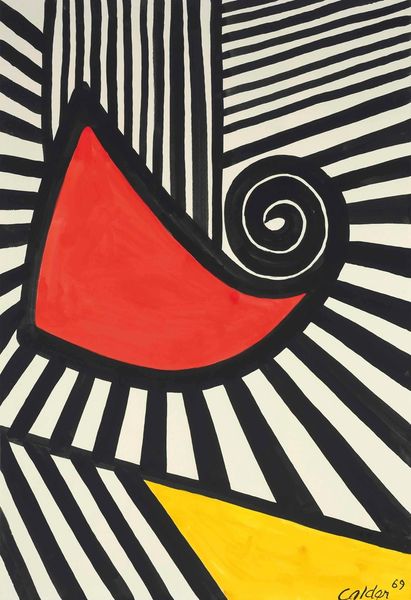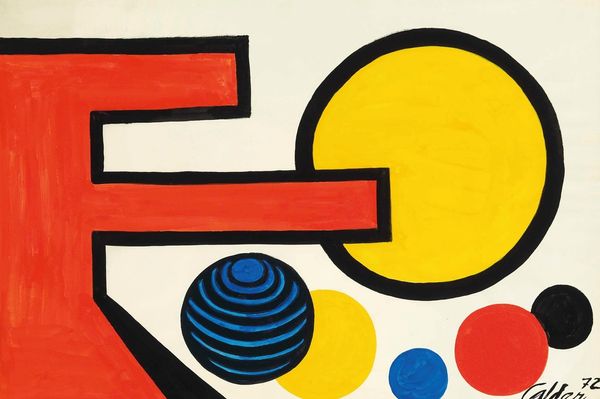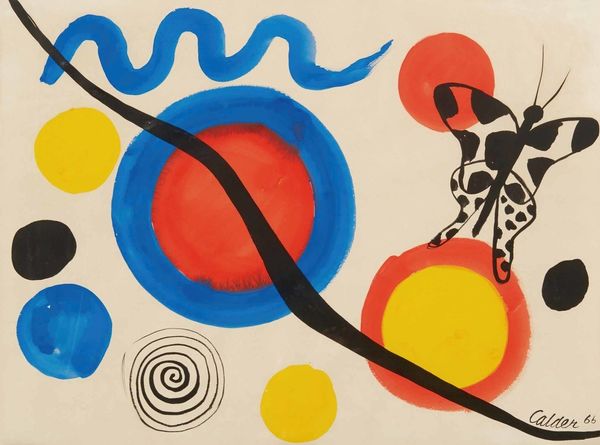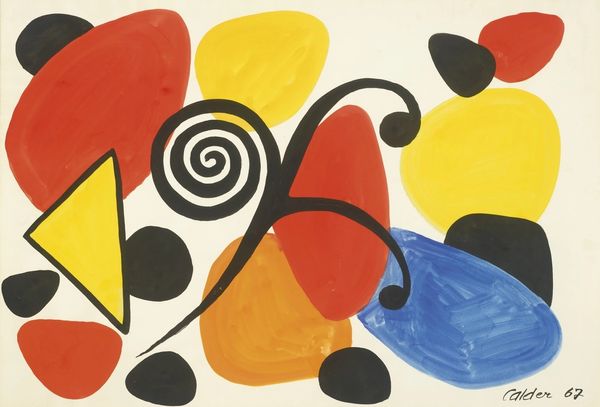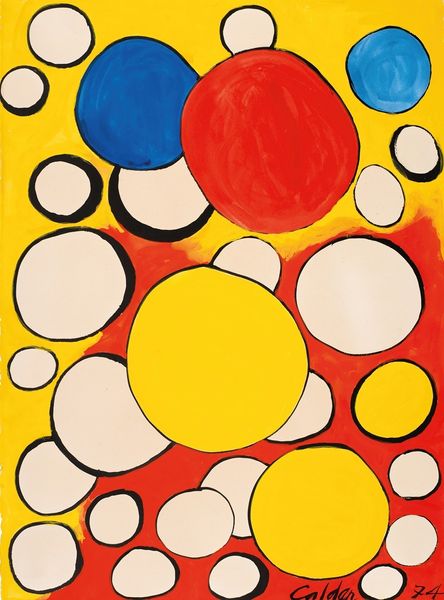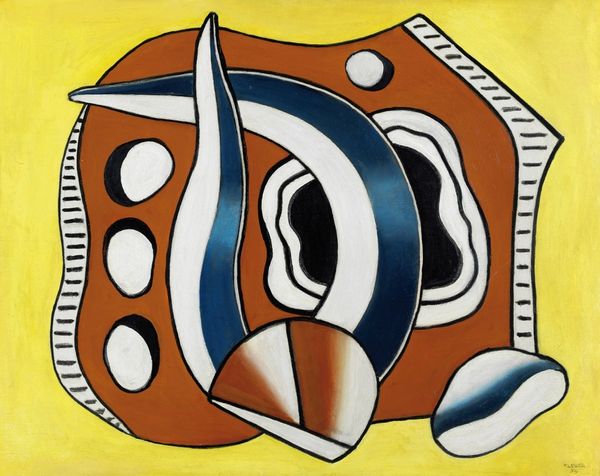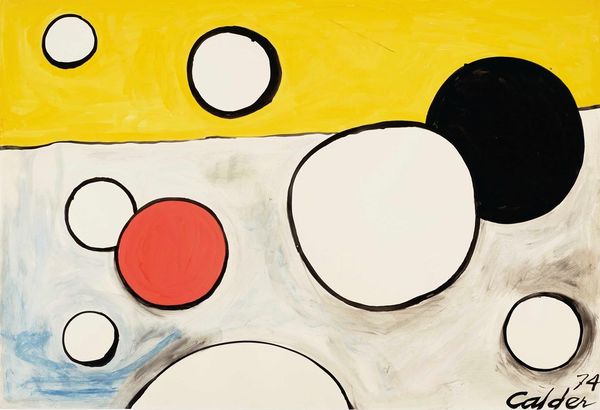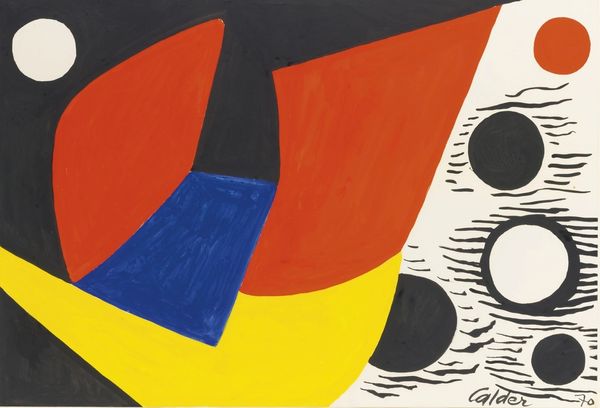
Copyright: Modern Artists: Artvee
Curator: Looking at this piece, "Easter Eggs Behind The Sun" from 1971 by Alexander Calder, a childlike whimsy takes hold, wouldn't you say? The basic forms are rendered in vibrant acrylics—simple geometric shapes against what could be sky and sun. Editor: It strikes me as almost deceptively cheerful. Considering Calder created this in '71, a turbulent time globally, the painting feels like an act of deliberate optimism, almost a protest against the anxieties of the era through a visual language of playfulness. Curator: Ah, but consider the shapes themselves! The recurring circles—aren't they primal, universal symbols? The circle representing wholeness, unity, maybe even celestial bodies—recurring motifs throughout human history. Calder's use, especially with the sun and moon shapes, points to something deeply ingrained. Editor: Yes, I see that, but I'm drawn to the formal elements as potentially symbolic themselves. The sharp division between colors, for instance, almost evokes the binary thinking so prevalent during the Cold War. Does this separation of forms hint at sociopolitical divides masked by an accessible aesthetic? Curator: Interesting parallel. Yet, doesn’t that bright yellow also symbolize enlightenment, knowledge emerging from darkness? Perhaps those divisions aren't absolute, especially when paired with the possibility of newfound awareness. I would not focus on the anxiety and division, when he gave us sun as hope and energy for life, the eggs being an omen for renewal. Editor: That’s precisely the point: there are multiple interpretations here, and perhaps the interplay itself speaks to the complexities. Calder presents an uncomplicated surface—and it might serve as a gentle prod, inviting viewers to think beyond face value about their time and the imagery produced from them. Curator: Indeed, the symbols aren't fixed; their meanings evolve with us, making a work from 1971 incredibly relevant to current discourse, still. It invites reflection. Editor: Absolutely. The conversation about aesthetics and meaning is not static, the questions and ideas it raises remain, it allows the art to reverberate through time.
Comments
No comments
Be the first to comment and join the conversation on the ultimate creative platform.
